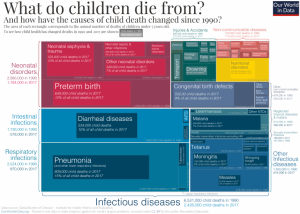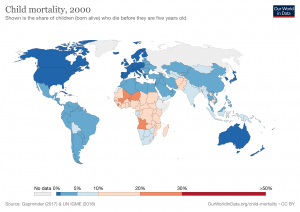A Crash Course: Child Mortality
Here at the Children’s Prize, we are fighting hard to reduce child mortality. Child mortality is a worldwide problem that touches millions of families every year. The topic of child mortality is incredibly complex and hard to digest but is incredibly important to understand. We live in such a globalized world and as individuals we ought to be educating ourselves on issues plaguing the world. As a result, I have put together important resources including pictures, articles and video that will serve as a crash course introduction to the subject and hopefully provoke some thought about possible solutions.
- What is Child Mortality?
Child mortality as a whole refers to the death occurring in children under the age of five. Child mortality is often split into different sectors. The first sector, namely infant mortality refers to children who die within the first year of life. The second sector is called neonatal mortality and this refers to newborns.
2. What are the leading causes of Child Mortality?

This data is pulled from ourworldindata.org and it compare the leading causes of death in 1990 to the leading causes in 2017. As shown on the graphic, infectious diseases makes up a big chuck of the causes (45%), that number includes diseases such as pneumonia, and other respiratory diseases which makes up 15%. Preterm births and neonatal disorders make up 12%, diarrheal diseases such as cholera make up 10% and congenital diseases make up 9%.
3. Preventable and underlying causes
Underlying causes are where the problem starts from. In the case of child mortality there as so many different underlying causes including the lack of nutrition, sanitation and education. For example the education of the mother is a big indicator of their child’s mortality. Additionally, many of the leading causes are preventable as a result of the knowledge we possess today. Vaccines as well as treatments are available to prevent death by causes such as pneumonia and malaria. A preventable cause of death means that the death of the child could have been prevented and is prevented in countless other cases.
This is an example of a women who identified the preventable causes of child mortality in Cartagena, Colombia, and worked to reduce the number of deaths and did so effectively
https://www.youtube.com/watch?v=oCBO53OBB1E
4. Distribution map of child mortality in 2000 vs 2016


5. Other resources
The World Health Organization and the United Nations are your friend when it comes to understanding the depth of the issue at hand. However simple facts might be easier to conceptualize.
The Borgen Project list these ten facts
- About 99 percent of newborn deaths transpire in low and middle-income countries.
- Africa and South Asia currently have the highest rates of infant mortality and show the least amount of progress in combating it.
- In 2015, 5.9 million children died before their fifth birthday. This is equivalent to 11 child deaths every minute.
- Approximately 2.7 million child deaths occur within their first month of life. Nearly 50 percent of these deaths occur within the first 24 hours, while 75 percent occur within the first week.
- A child’s risk of mortality is highest in the neonatal period. This period occurs in the first 28 days of a child’s life.
- Leading causes of child mortality in children under 5 years include preterm birth complications, pneumonia, birth asphyxia, diarrhea and malaria.
- Roughly 45 percent of all child deaths are at least in part due to malnutrition.
- Children who have lost their mothers are ten times as likely to die prematurely than children whose mothers are present.
- In 2015, low-income countries saw one child in every 13 die before the age of five. In wealthy nations, this occurred in only one child of every 143.
- About 3 million of the 5.9 million children who die each year can be saved at a low cost to wealthy nations.
This is an issue worth understanding. It is a topic that is felt worldwide and solutions are long overdue. We urge you to take the steps necessary to understand this complex issue because understanding solutions can be formed.
